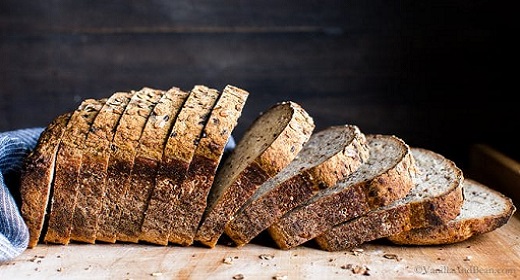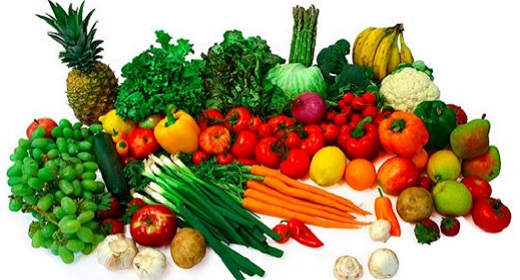by Ocean Robbins: Bread is “the staff of life.” When we dine with friends, we break bread…
All the ancient Romans wanted was, according to the poet Juvenal, “bread and circuses.” And don’t forget the ultimate date night, according to Omar Khayyam: “a loaf of bread, a jug of wine, and thou.” Although chapter four of the Book of Matthew tells us that “man shall not live by bread alone,” just two chapters later we’re instructed to pray using these words: “Give us this day our daily bread.”
That’s a lot of cultural significance to give up if you happen to be gluten-free. And luckily, with recent innovations in gluten-free living, in general, and baking, in particular, you can now enjoy the world’s most iconic and metaphorical food, even if you don’t want to (or can’t) dine on gluten.
Why You Might Want to Avoid Wheat Breads
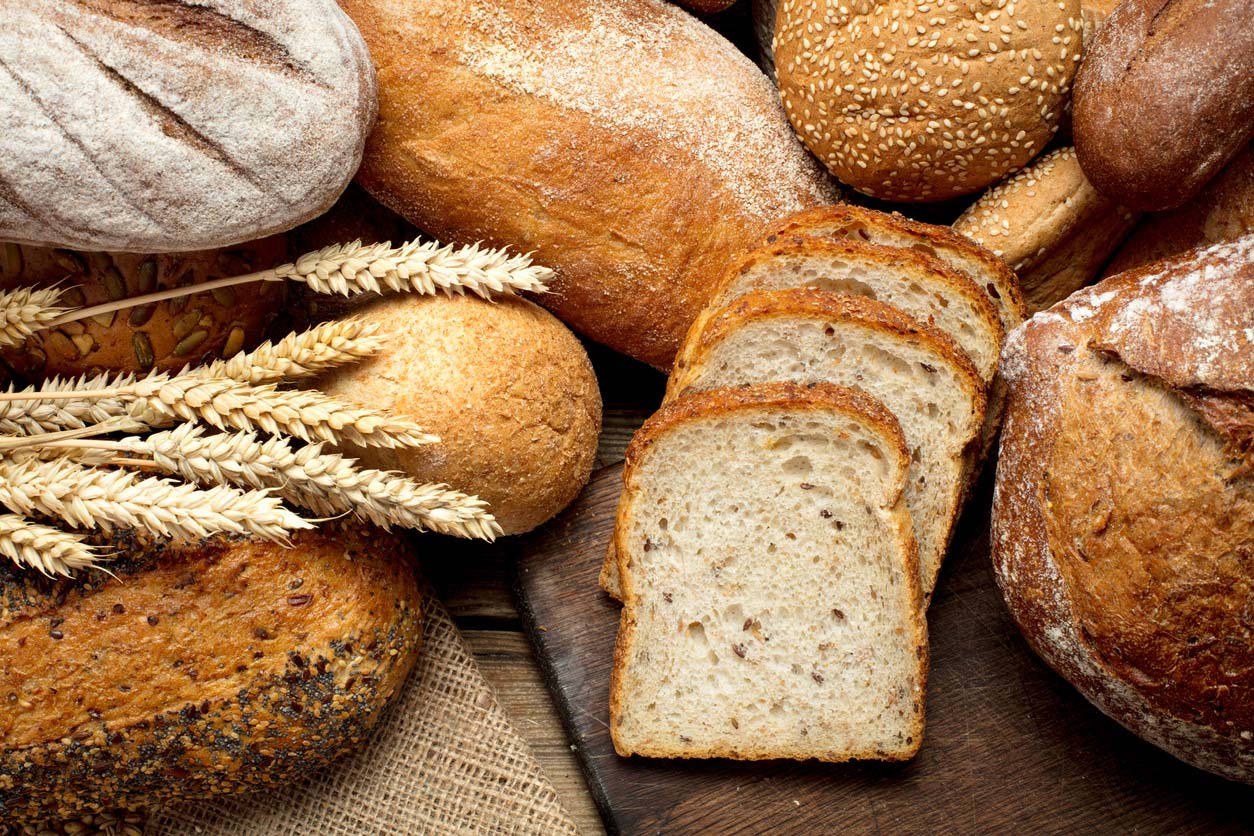
Unlike those loaves available to Juvenal, Omar Khayyam, and Matthew, modern bread isn’t inherently wholesome. Commercial bread is typically made with refined (and, unless it is organic, glyphosate-contaminated) white flour that owes its long shelf life to the process that removes all nutrients, including vitamins and fiber. Despite the low quality of that main ingredient, corporate food scientists and marketers also add large quantities of sugar, salt, and unhealthy vegetable oils, along with chemicals and dough conditioners, to make the product tastier.
Take, for example, Pepperidge Farm Farmhouse Honey Wheat Bread. While honey wheat bread sounds wholesome enough, its ingredients include a bunch of unpronounceables, like calcium propionate, sodium stearoyl lactylate, and datem, which is an abbreviation for diacetyl tartaric acid ester of mono- and diglycerides, also known internationally (by Interpol, I suspect) as additive E472. And flavorings include brown sugar, sugar, invert sugar, molasses, and honey, and a lot of salt. In fact, one serving of that bread contains more sodium than a serving of Lay’s Classic Potato Chips! Not exactly the staff of life; more like the staff of disability.
Gluten Sensitivity to Wheat Consumption
Even if the bread is 100% whole wheat, complete with bran, endosperm, and germ, many people still have problems digesting wheat and its primary protein, gluten. About 2% of the population suffers from celiac disease, an immune reaction to gluten that damages the lining of the small intestine and prevents absorption of many nutrients. These folks need to stay far away from wheat, and its gluten-containing cousins, rye and barley.
Some people who do not have celiac disease still benefit from eliminating or minimizing exposure to wheat and gluten. This includes those with gluten sensitivity, which may include people with autoimmune disorders.
The truth is that the gluten-free craze may be overblown, with many people who are NOT sensitive to gluten choosing to avoid what could actually be a healthy source of food. Whole grains, and whole wheat, in particular, provide valuable health benefits. After all, gluten is itself a plant-based protein.
But celiac disease and gluten sensitivity are real conditions, and they aren’t uncommon. Gluten sensitivity, in particular, is difficult to test for, so if you suspect wheat consumption may be bringing you down, it’s reasonable to go gluten-free for at least a few months to see how you feel. Sometimes, for some people, a gluten-free diet can make a world of difference.
We wrote a whole article on the pros and cons of gluten, linked here.
Even if you are A-OK with gluten, and you limit your wheat consumption to 100% whole grain products, you may be living with family members who are gluten-free, meaning you’ll have to adapt in order to “break bread” together.
Diversifying Your Calories
Also, it’s a fine idea to diversify your calories, especially if bread, rolls, pizza, cookies, and spaghetti are five of your basic food groups. Wheat is a staple food for 35% of the world, providing essential calories and protein — more than any other crop. But you can have too much of anything. A lot of people want to cut down on their wheat consumption. And gluten-free bread can allow you to “have your bread and eat it too,” whether or not you’re gluten-free.
When you make or choose bread made with gluten-free whole grain alternatives, you can avoid many of these issues. And some gluten-free breads and recipes feature additional whole foods like nuts and seeds baked right in, multiplying the whole food, plant-based goodness.
Why Baking Bread Without Gluten is Tricky
There’s a reason wheat has been the default grain used by bread makers for thousands of years. And that reason is, in a word, gluten. As in, straight from the Latin word for “glue.” Gluten gets very sticky when wet, and forms a sticky network that gives bread its structure when kneaded. That’s why some wheat products can rise so prodigiously. The gluten holds them together even as the yeast burps create rising pockets of air.
If you want to make a gluten-free loaf that doesn’t resemble a brick, you need to replace the gluten with an alternative binder. Many non-vegans use eggs for this task, but there are plenty of plant-based options, too, including xanthan gum, yeast, guar gum, and flax meal.
Another challenge for gluten-free bread is to make a loaf that isn’t dry and crumbly, or rock-hard and brittle. The texture of your bread is a function of the flour you’re using. Usually, you’ll need to combine a few different flours to approximate the texture that you’d get from wheat.
If you’re an intuitive baker and tend to add the amounts that “feel right,” you’ll have a lot of trouble making a satisfactory gluten-free loaf. Gluten-free baking is a bit like chemistry class; eyeball your measurements and you’ll likely end up with a final product that nobody wants to eat. Too much flour will dry out your bread. In fact, the density of the flour can cause you to add too much to your batter.
Rather than scooping cupfuls directly from the bag, first, fluff the flour up in a separate container or bowl. Then, sprinkle it into your dry measuring cup and level it off with the back of a knife. Don’t tamp it down. Sometimes even an extra teaspoon can mess up a recipe.
Gluten-Free and Whole Grain Flours
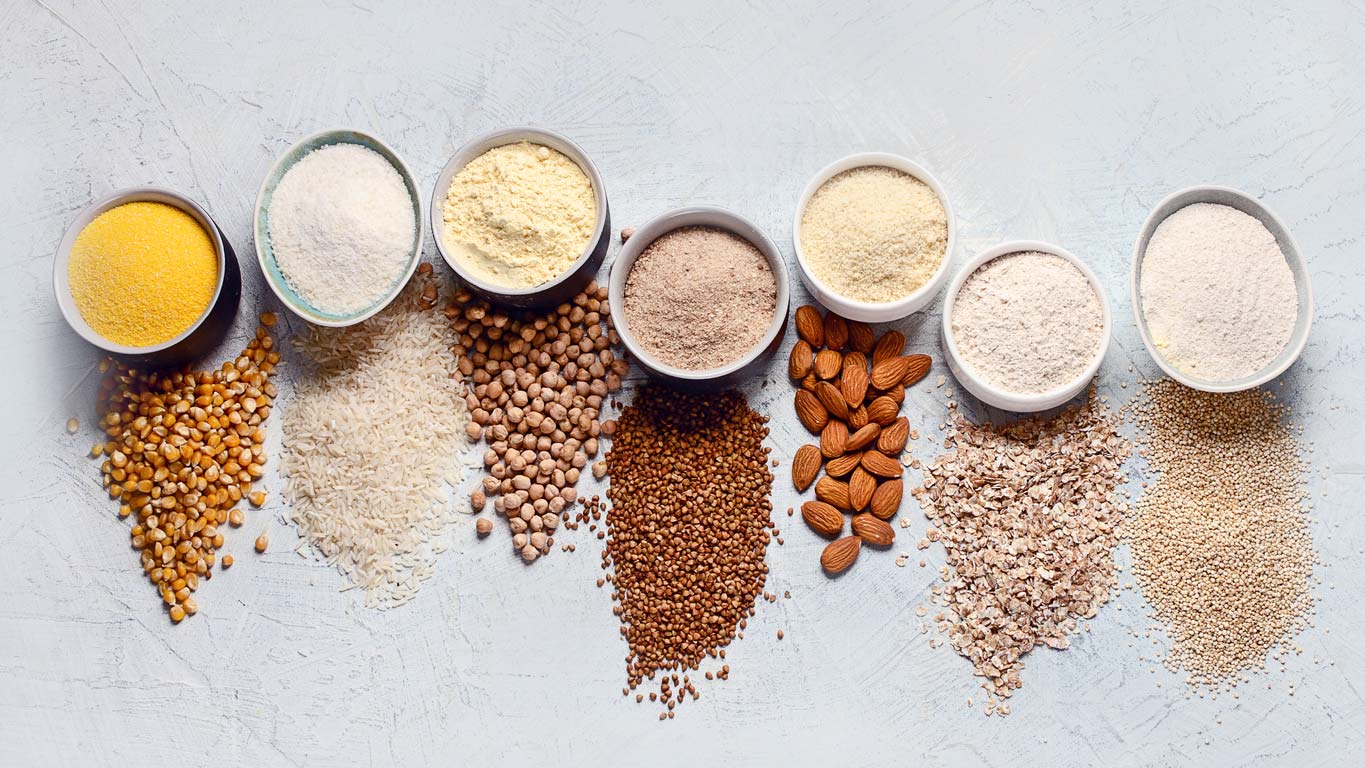
So you’re ready to start baking some gluten-free bread, and you’re wondering what kinds of flour can you use? Here’s a short list:
- Tapioca
- Rice
- Amaranth
- Millet
- Oat
- Sorghum
- Teff
- Almond
- Potato starch
- Cornmeal
Some of these ingredients may be unfamiliar to you. But you can find them in some upscale supermarkets, including Whole Foods, health food and natural foods stores, co-ops, and online (check out Thrive Market and Amazon for high quality, organic versions). For a primer on gluten-free baking, including how to use some of these flours, click here for a guide from King Arthur Baking.
If you get whole grain flours, you can keep them fresh longer by storing them in the fridge or freezer, rather than the pantry. Remember, the only reason that white flour can live at room temperature for months is that it’s totally inert, with no nutritional value except for calories. Whole grains can go rancid, and since they’re chock full of nutrients, they are tempting fare for any moths or other bugs that can access them.
Tips for Making Gluten-Free Bread
Ready to get baking? If you’re a beginner, you may want to start off with a prepared gluten-free flour mix. Two well-known mixes are Bob’s Red Mill’s Gluten-Free 1-to-1 Baking Flour and King Arthur All Purpose Flour. Both contain white and brown rice flour, xanthan gum, tapioca, and potato starch, along with other ingredients.
If you prefer to mix your own, here’s a formula courtesy of blogger Minimalist Baker. Whichever flour you use, make sure it comes to room temperature before mixing the dough. If the flour is too cold, it won’t “proof” quickly enough, which is to say, the yeast won’t get activated to create all those little bubbles that make bread rise.
I’m generally a big fan of personal creativity when it comes to cooking, so please believe me when I advise you to avoid recipe substitutions until you’ve had some practice with gluten-free breadmaking. You can’t always substitute gluten-free flours 1-to-1 for wheat flour. Not all white powders are alike! If you are ready to flex your experimentation muscles, here’s a guide for you.
And if you’re searching for gluten-free recipes online, remember that gluten-free and vegan or plant-based aren’t the same thing. Read the full ingredient list before starting, so you don’t discover that the recipe calls for egg or butter if you don’t want them in your food. It’s much easier to substitute chia seeds or flax meal for eggs, or applesauce for butter, in cake recipes than in gluten-free baking. If you are feeling lucky, here’s the Food Revolution guide to vegan substitutions for cooking and baking. And of course, the recipes you’ll find below are all totally vegan.
Some gluten-free bread recipes lean heavily on sugars and other sweeteners. But you can make them healthier by also omitting the sweeteners or trying one of these alternative sweeteners.
Baking Techniques
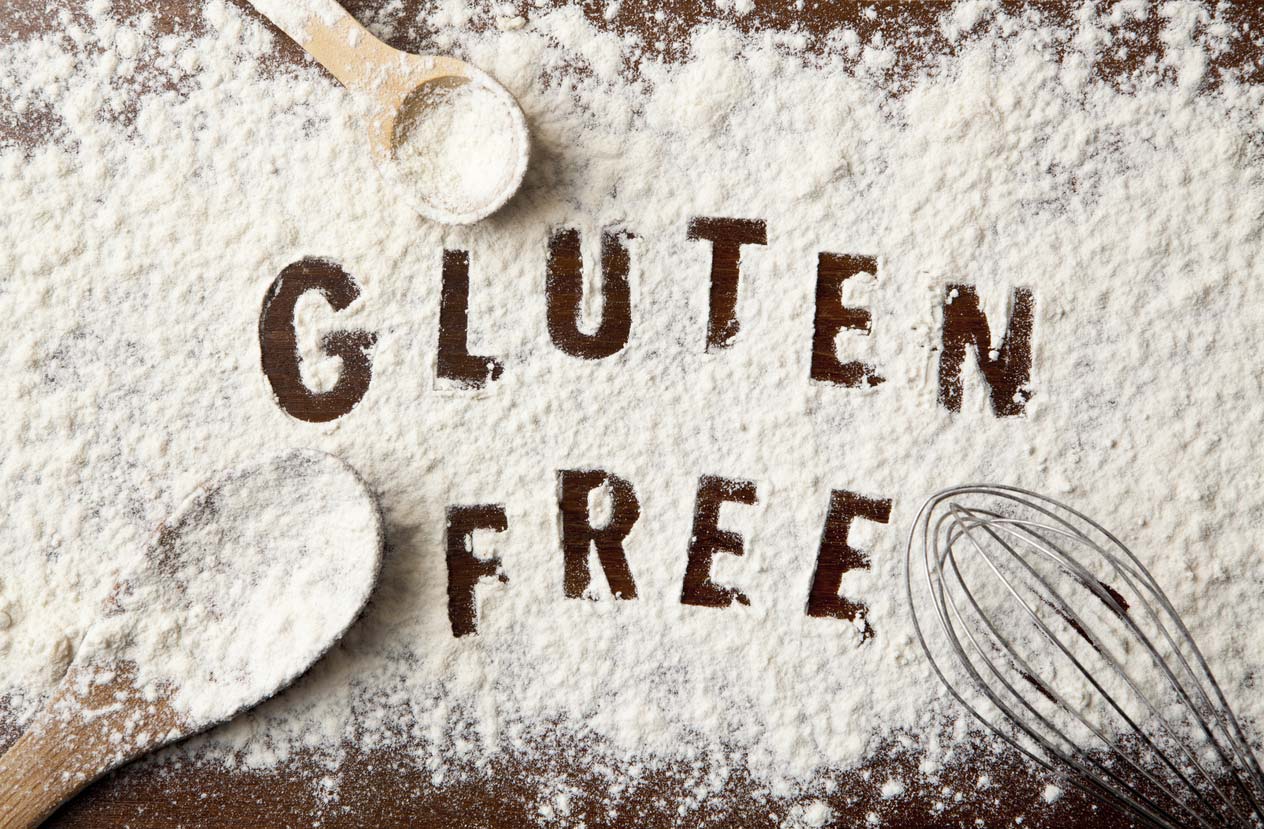
You have to create the right environment for proofing bread. Think of your little yeasty friends as Goldilocks. They do their thing when it’s not too hot and not too cold. Most bakers will tell you to aim for 80-90 degrees F (that’s 26-32 degrees C). You can achieve this range indoors by briefly turning on your oven at the lowest setting, and letting the dough rise in an oven-proof container.
While traditional bread bakers like to let their dough double in size before baking, that’s not always necessary with gluten-free loaves. According to the experts at Bob’s Red Mill, aim for 20-25 minutes of proofing. Even if the dough hasn’t doubled, it will likely gain height through “oven spring,” which occurs during the first few minutes of baking as the bread continues to rise until the crust hardens.
Dough consistency is key to a good gluten-free loaf, so make sure you mix thoroughly. You may need to make the dough wetter than regular bread dough to compensate for the lack of gluten. And while wheat bread does fine with hand kneading, most bakers prefer a hand or stand mixer to get enough air in wheat-free dough.
When your dough’s ready for the oven, you have several options for what to bake it in. A basic loaf pan can work. These come in stainless, aluminized, or carbon steel, ceramic, silicone, and glass. If you prefer a soft, thin crust, you can get fancy with a pain de mie pan, which has a sliding lid and keeps the outside of the loaf moist.
You could also use a bread machine, but some homemade recipes fare poorly. If you have a bread maker, make sure you find a recipe that’s been specifically tested under those conditions.
Once your loaf is done, it’s best to eat it fresh, within a few days. (I know, twist my arm!) You can toast slices right before serving to get it nice and crunchy and have that bread aroma wafting around your kitchen. If you’re planning on freezing some for later, get it in the freezer right away — wrapped in a plastic or a silicone bag, as soon as it’s reached room temperature out of the oven — to keep the optimal texture.
Store-Bought Gluten-Free Bread
If this article has you hankering for a gluten-free loaf, and you’re just not excited about baking, or now isn’t a great time, don’t despair. DIY isn’t the only way to go anymore. Most supermarkets and even some farmers markets sell gluten-free loaves, made with the flours we’ve discussed above.
But remember, just because it’s gluten-free, doesn’t guarantee its healthy. For a lot of companies, gluten-free is just the latest fad, rather than a commitment to quality. Read the ingredients before purchasing any store-bought loaves. Vegans will want to look out for dairy and eggs. And everyone could do to stay away from bread made with lots of sugar or oil.
If you have celiac disease, you’ll also want to make sure the packaging has a seal from the Gluten-Free Certification Organization (GFCO) that ensures no cross-contamination or exposure to gluten happened anywhere in the manufacturing process.
Several brands make high-quality gluten-free breads. Food For Life (makers of Ezekiel Bread) have a line of gluten-free breads, including seeded, pecan, and cinnamon raisin. Some of these contain oil, along with agave nectar as a sweetener. Cook’s Sourdough sells gluten-free breads online or at Whole Foods and other specialty markets (although they’re made with some sugar). Little Northern Bakehouse makes gluten-free breads, bagels, and pizza crusts, also containing sugar and oil. You may be able to find their products at local co-ops and Fresh Markets, or by using their online store finder. If you’re partial to sourdough bread, check out the offerings from these two brands that are certified gluten-free: Bread SRSLY, and GluteNull.
5 Good-for-You Gluten-Free Bread Recipes
Gluten-free never tasted so good! Whether you need to follow a gluten-free diet due to celiac disease, gluten intolerance, or if you simply want to try a variety of new delicious whole grains, there are lots of DIY options for you to try below.
If you love the healing and aromatic spices of Indian food, but avoid the bread because of the gluten, then dive straight into the flavorful and delicious Amaranth Potato Paratha. Or perhaps you’re a pizza lover. Then the Millet Flatbread is for you!
For those of you who haven’t tried iron-rich teff yet, this is your chance. Sweet ‘n Nutty Teff Bread is moist, dense, and packed with nutrition from teff flour, gluten-free oats, and pecans.
Fermentation lovers will want to jump to the Three-Seed Fermented Buckwheat Bread for a fun experience in the kitchen followed by tasty results.
And finally, a bread that can play the part of breakfast, snack, or an after-dinner treat. Banana Walnut Bread is a sweet treat that’s also packed with nutrition.
1. Amaranth Potato Paratha
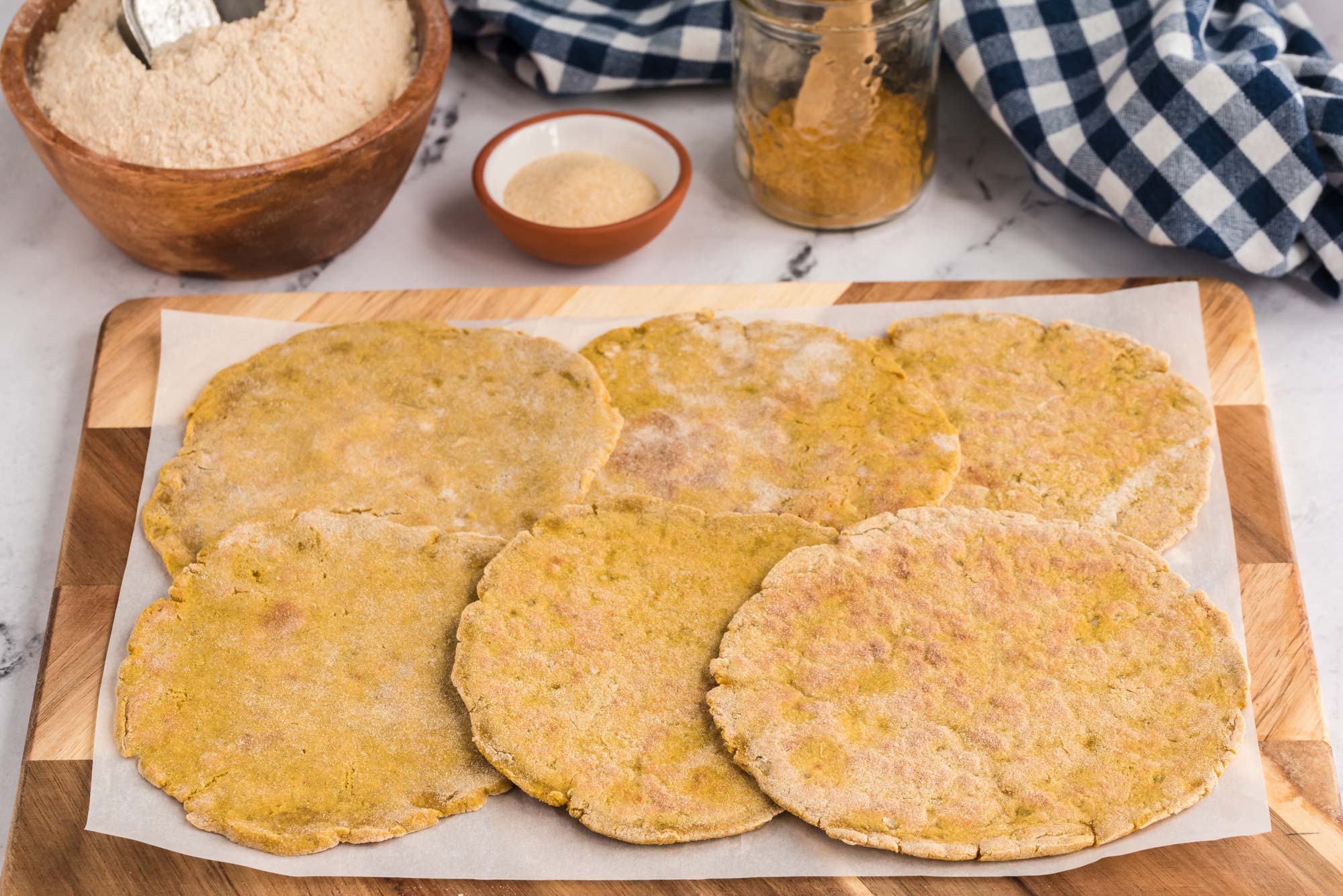
Dine-in but feel like you’re dining out with this homemade Indian Paratha bread made with whole-grain amaranth flour and rich potatoes. Amaranth flour is commonly used in Indian cuisine for its nutritional value. Fun fact about amaranth: it’s loaded with plant-based protein, with 9 grams per cup! Pair the paratha with your favorite Indian dishes like Chana Masala or Bhindi Masala.
2. Millet Flatbread
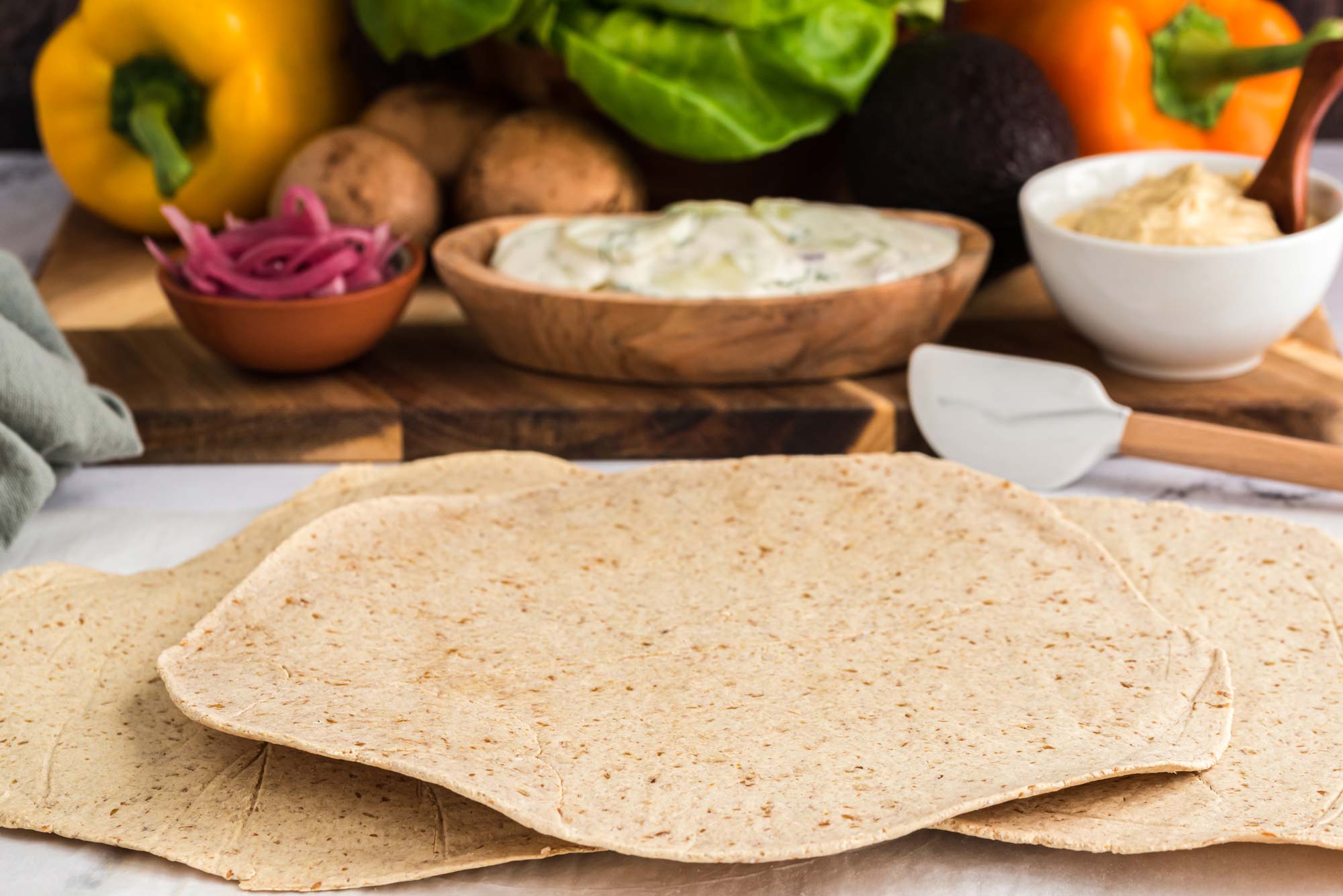
Talk about versatile! This whole-grain flatbread can be an appetizer, snack, or full meal, depending on what you add to it. Add fresh vegetables and roast for a veggie flatbread, break off pieces and dip them into your favorite hummus, or top it with sauce, cashew cheese, and mushrooms for a delicious pizza. Millet is a snap to prepare and is becoming easier to find. Bonus: It’s naturally high in protein and antioxidants!
3. Sweet ‘n Nutty Teff Bread
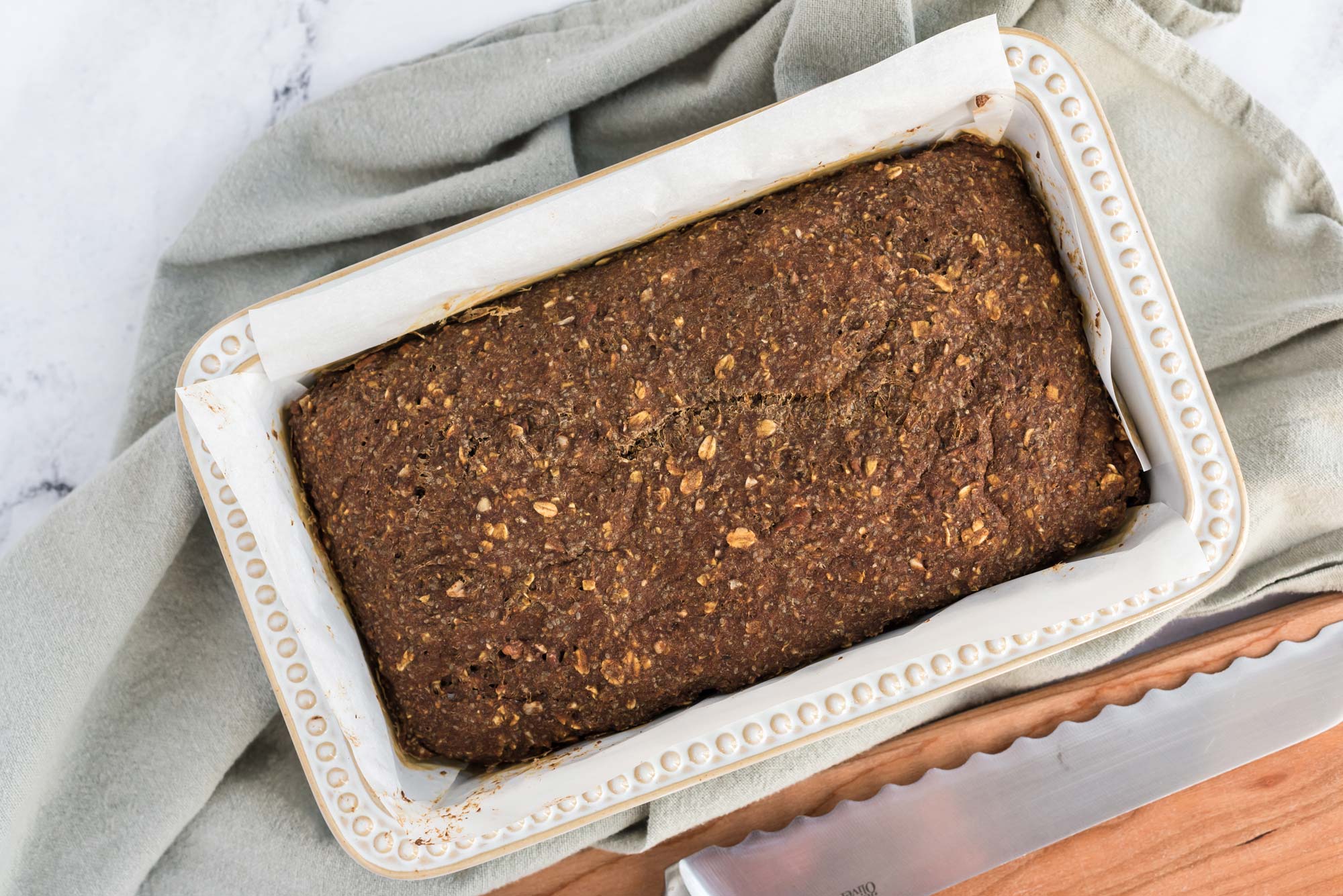
If you’re looking for a moist, dense gluten-free bread with a little bit of nuttiness and a touch of sweetness, then you’ve found it here. Teff is a wonderful, nutrient-dense substitute for wheat flour. Gluten-free oats give this bread some extra texture while the nuts add a little crunch. What’s more, this bread is really simple to make! Bonus: teff is higher in iron than any other whole grain, making it a true superstar grain.
4. Three-Seed Fermented Buckwheat Bread
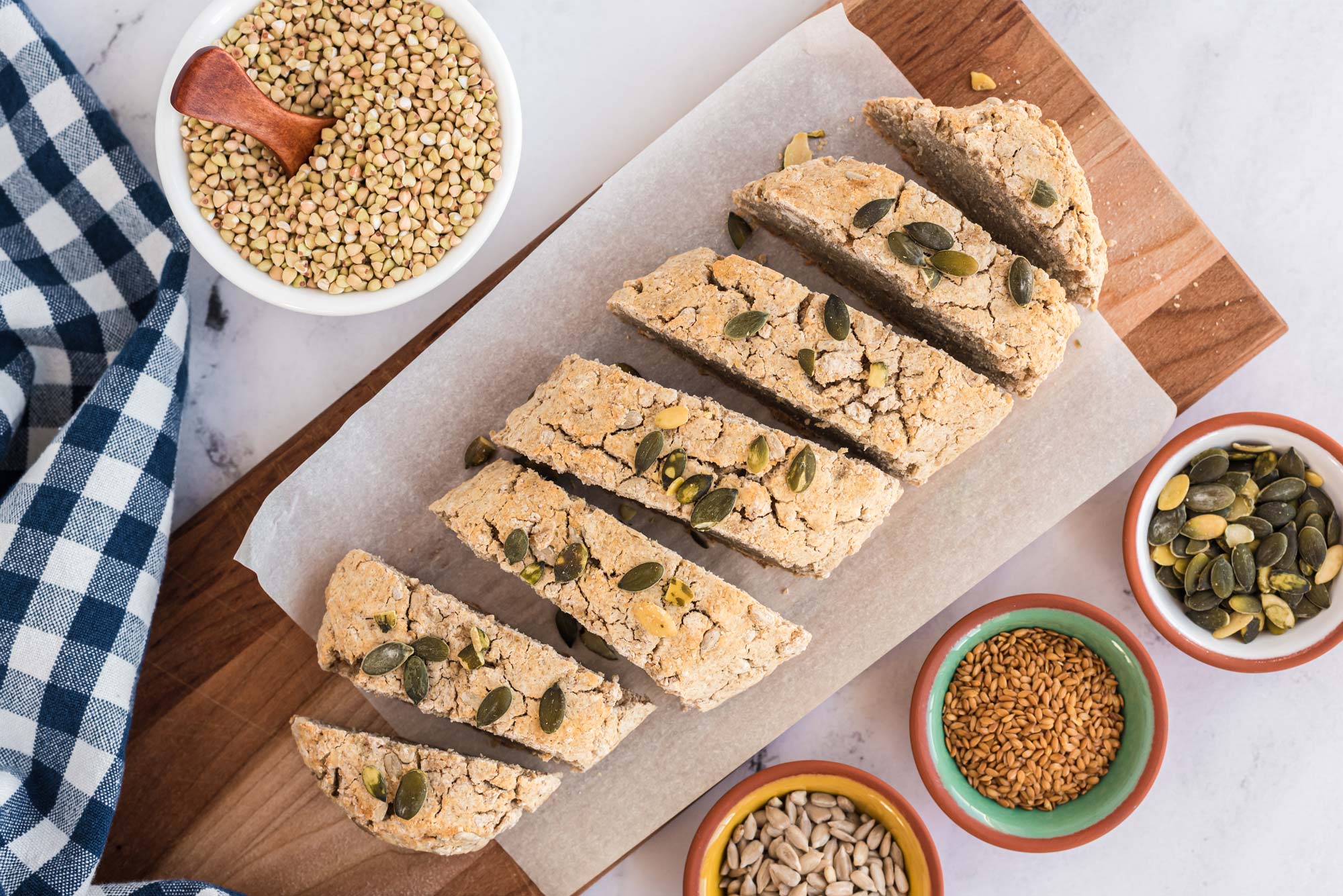
Get ready to shout out to the rooftops, “YUM!” after you try this deliciously moist bread with crunchy seeds and a slightly sour taste from the fermentation process. It takes a little patience while the fermentation does its magic, but the end result is absolutely worth the wait. Not only is this bread gluten-free — using buckwheat and brown rice flour — but it’s also packed with an antioxidant called rutin, which has been shown to improve circulation.
5. Banana Walnut Bread
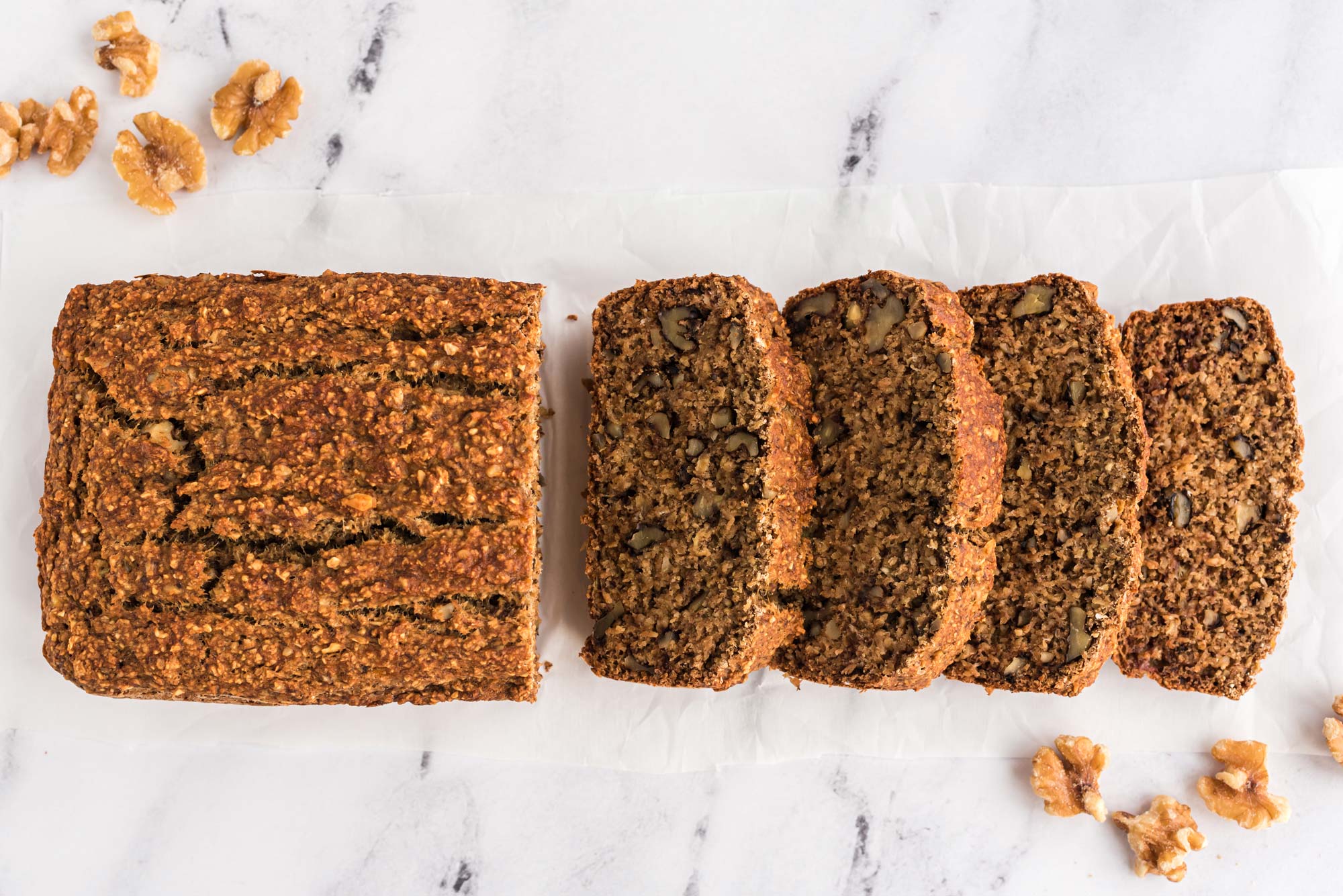
Is it dessert, breakfast, or a snack? Actually, Banana Walnut Bread can easily be all of the above. Heat a piece after dinner and enjoy it with banana n’ice cream for a sweet treat. Warm it in the toaster oven and spread your favorite nut butter on top for breakfast. Or, enjoy it with a cup of tea for an afternoon pick-me-up. No matter how you enjoy this bread, know that you’re getting lots of nutrition from the bananas, oat flour, and walnuts.
Gluten-free Whole Grain Breads: A New Culinary Adventure
And there you have it! If you’ve been looking for a new culinary adventure, gluten-free bread might just be the thing. Whether you make your own from scratch, use a mix, or go for the store-bought loaves, you can still enjoy one of humankind’s most basic pleasures even if you and gluten aren’t on speaking terms. So no more loafing around. (Bun intended!)







